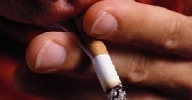Chronic migraines, throbbing jaw pain, clicking jaw joint – they’re all classic symptoms of temporomandibular joint disorder (TMD) . TMD is a neuromuscular dental disorder involving the temporomandibular joint (TMJ), which is the joint where the jaw meets the skull. TMJ is a complex joint where the jaw can both slide back and forth and move up and down enabling the mouth to perform the complicated movements of speaking and chewing. When the joint or its supporting structures are inflamed or out of alignment, the patient can experience anything from mild discomfort to excruciating pain.
TMD Symptoms
A myriad of symptoms can migrate from the mouth to other parts of the body including the upper body. Here’s a list of typical TMD symptoms:
· Muscle pain around the jaw and mouth
· Frequent headaches and migraines
· Excessive facial pain
· Popping or clicking in the jaw joint
· Opening and closing the mouth is painful due to stiff jaw joints
· Pain when chewing, grinding or clenching teeth
· Teeth wear out prematurely
· Teeth don’t touch when biting
· Neck and shoulder pain
· Otalgia - Ear pain
· Tinnitus – constant buzzing or ringing sound in the ears
Treatment
For mild symptoms of TMD, some of the following self-care tips can help keep symptoms under control or cause them to completely disappear:
·Change in eating habits – no hard, sticky or large portioned foods that force the jaw to widen or bite down hard
·Eating softer foods
·A routine of ice, exercise and moist heat as recommended by your dentist
·Avoid wide yawning
·No gum chewing
·Reduce stress which leads to grinding and clenching teeth
A dental professional should be contacted for more severe symptoms. Depending on the severity of the symptoms, typical TMD solutions include the following:
· Pain relievers, muscle relaxants and/or anti-inflammatories
· Stabilization splint (biteplate, nightguard) or Mandibular Repositioning Device
· Gentle jaw stretching and massaging
· Electrical nerve stimulation – using a low electrical current to relax the joint and surrounding muscles
· Ultrasound treatment – deep heat on the joint to loosen it up
· Surgery – should be considered as a last resort. There are two options:
· Arthroscopy – the patient is under a general anesthesia. An incision is made in front of the ear. The surgeon removes tissue or realigns the disc
· Open joint surgery – special equipment reveals the entire TMJ to allow surgeon to move around easily. This procedure is used if your TMJ is degenerating, there are tumors near the joint or if there’s severe bone chips or scarring



